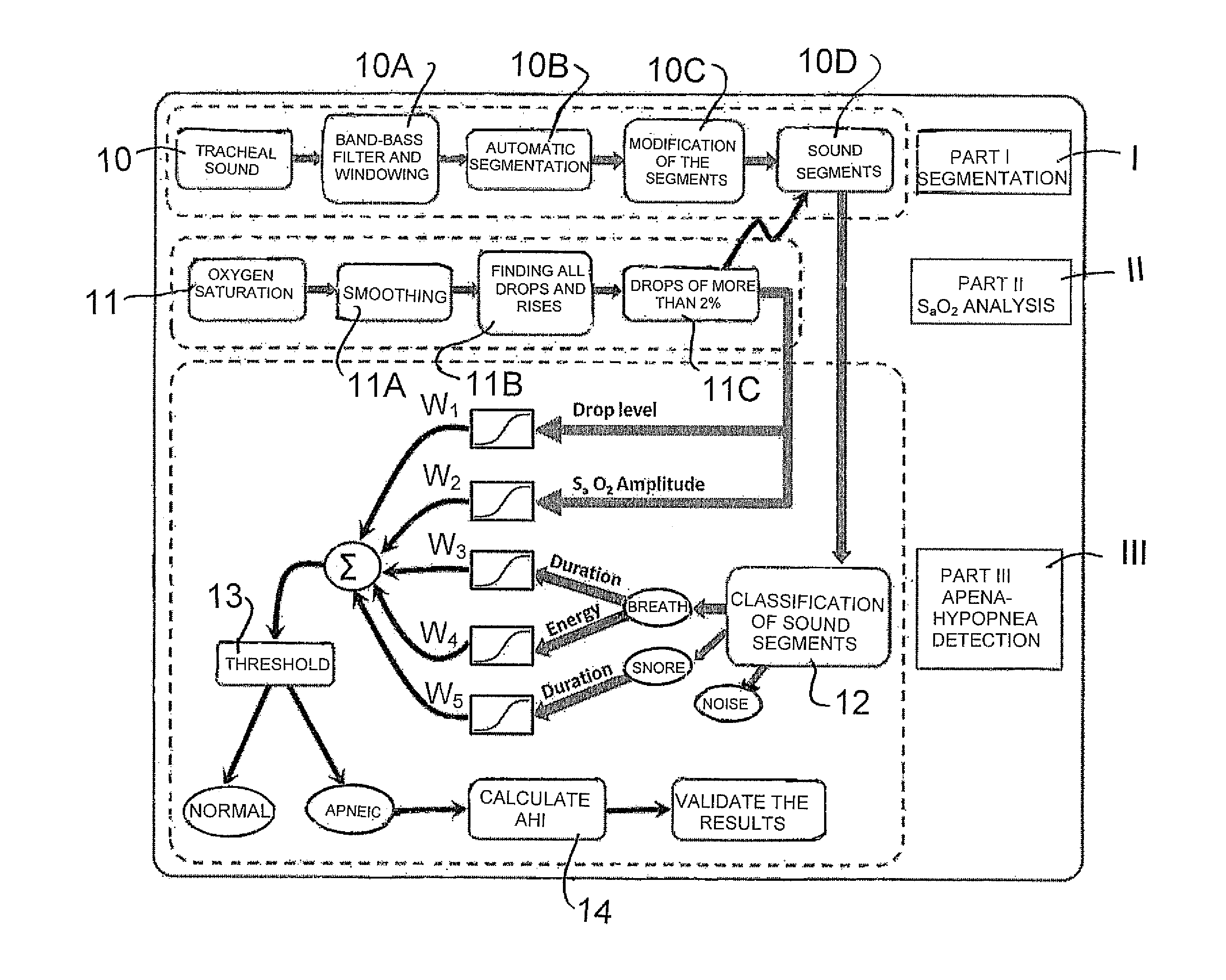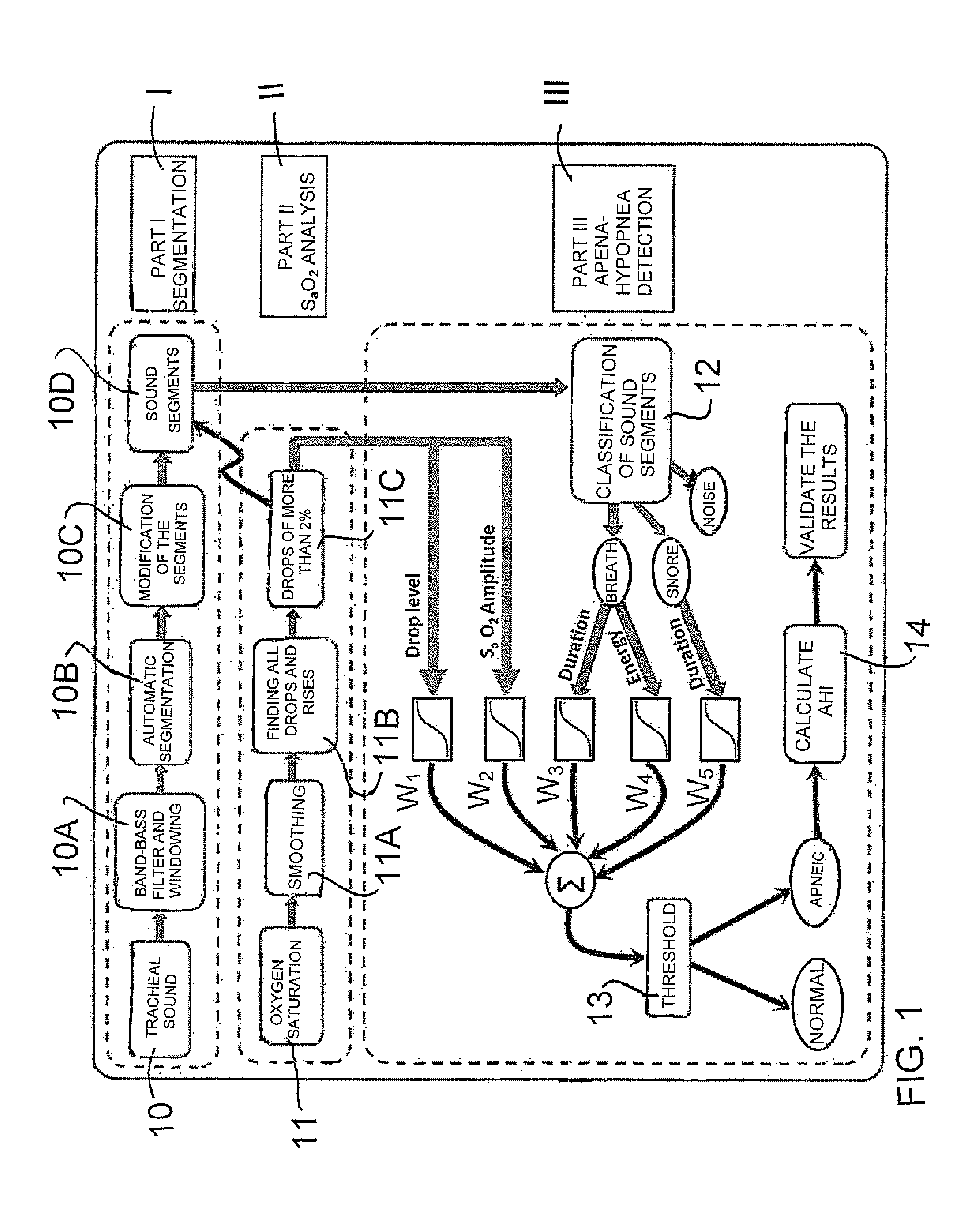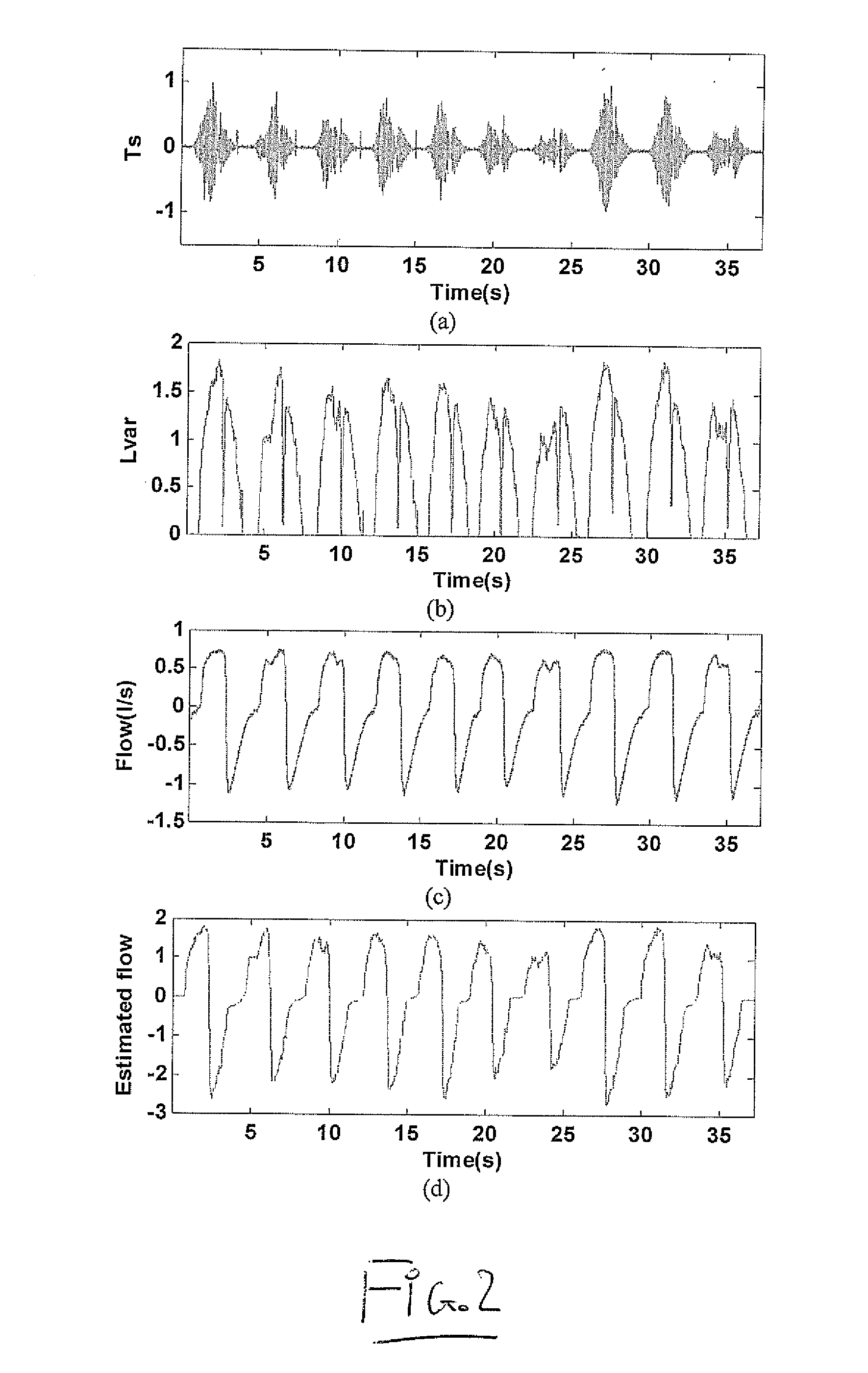Sleep apnea monitoring and diagnosis based on pulse oximetery and tracheal sound signals
a technology of tracheal sound and tracheal oximeter, which is applied in the field of sleep apnea monitoring and diagnosis based on pulse oximetery and tracheal sound signals, can solve the problems of no practical details of a system which may be used in practice, no longer available, and inability to give a solution to the presentation of respiratory flow in the presence of snoring sounds, so as to reduce the need for polysomnography tests, reduce movement noise noise
- Summary
- Abstract
- Description
- Claims
- Application Information
AI Technical Summary
Benefits of technology
Problems solved by technology
Method used
Image
Examples
Embodiment Construction
[0091]The apparatus of the present invention is shown schematically in FIG. 1 for use in analysis of breathing pattern of a patient during sleep for detection of apnea / hypopnea events. The apparatus includes a microphone 10 arranged to be located on the neck of the patient for generating signals in response to breathing and snore sounds from the patient. The sounds are communicated from the sensor 10 a processor containing software arranged to provide in effect a band pass filter 10A, a system 10B for separating the sounds in to segments, a system 10C for modifying the segments and a transmitter 10D for transmitting the separate segments to a classification system 12.
[0092]The apparatus further includes a finger probe Oximeter to be located on the patient's finger for recording the patient's blood SaO2 signal. The signals pass through a smoothing filter 11A and a comparison system 11B, 11C to determine drops in SaO2 signal of more than 2%.
[0093]The device further ...
PUM
 Login to View More
Login to View More Abstract
Description
Claims
Application Information
 Login to View More
Login to View More - R&D
- Intellectual Property
- Life Sciences
- Materials
- Tech Scout
- Unparalleled Data Quality
- Higher Quality Content
- 60% Fewer Hallucinations
Browse by: Latest US Patents, China's latest patents, Technical Efficacy Thesaurus, Application Domain, Technology Topic, Popular Technical Reports.
© 2025 PatSnap. All rights reserved.Legal|Privacy policy|Modern Slavery Act Transparency Statement|Sitemap|About US| Contact US: help@patsnap.com



